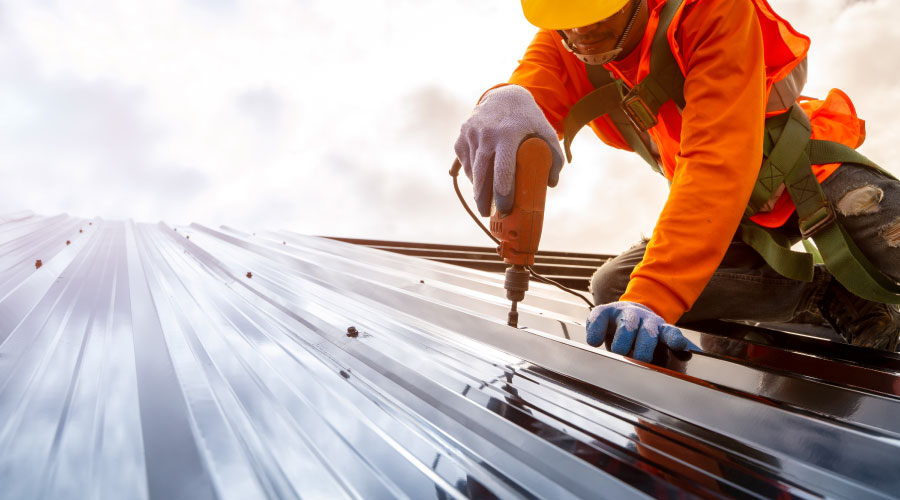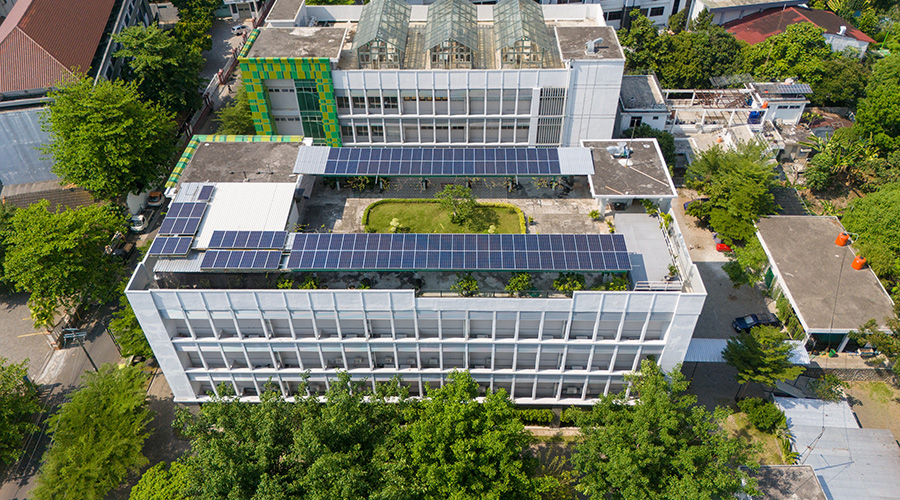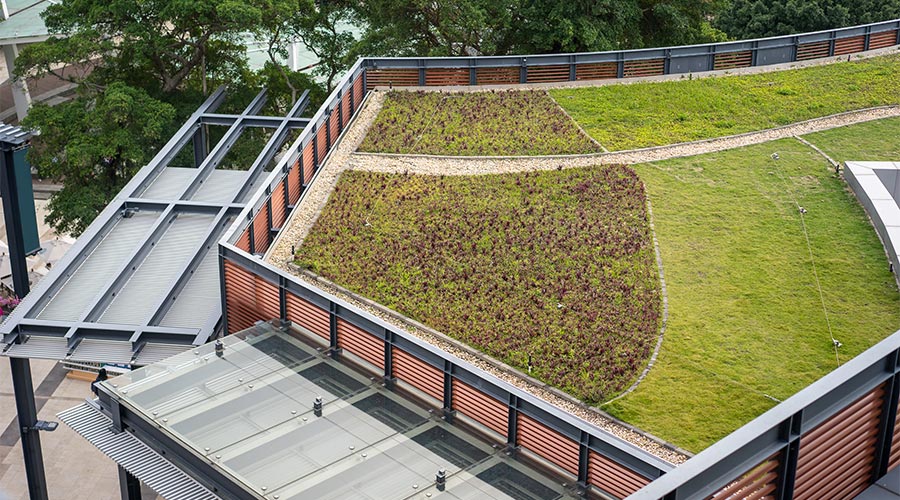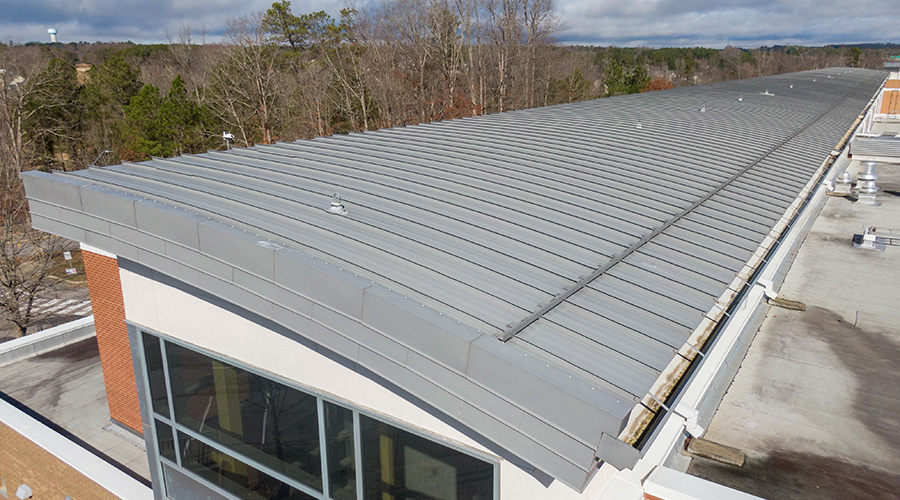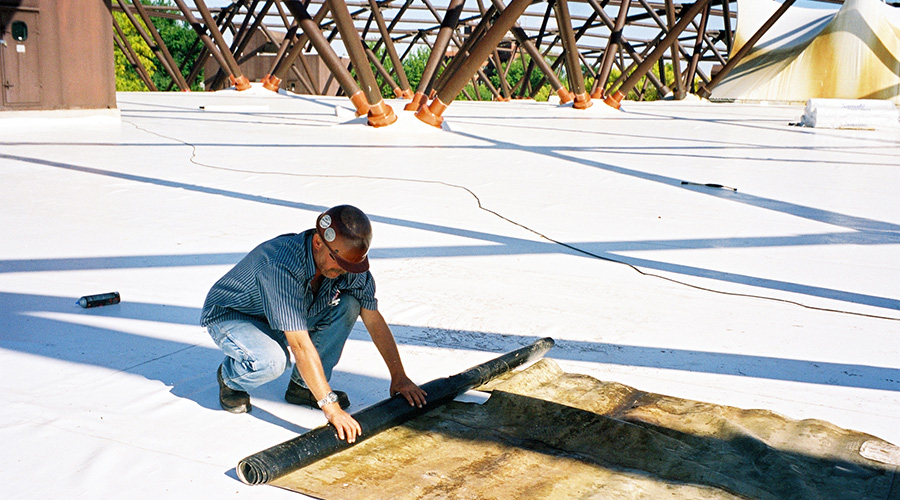Enhance Energy Performance with Metal Roofing
While good performance in extreme events is key to public safety, the fact is that most buildings do not experience these events in their lifetimes.
Energy performance is also a hot topic these days, and rightfully so. Metal roofs and walls are not insulative by themselves, but they do play a key role in radiative heat management. Through extensive research and real-time field testing, the industry has greatly lowered the infrared absorbance of paint pigments. Use of these coatings decreases heating loads in cooling dominated climates without sacrificing color selection or durability. Reflectivity may be stated as Solar Reflectance Index, or SRI, which is on a scale of 1 to 100 and even higher with 100 being a standard bright white. The SRI of white metal roofing is well into the 90s and even many of the traditional colors used in architectural applications register in the mid-20s or higher. For reference, untreated asphalt shingles are usually between 15 and 22.
IMP roofs combine this with superior core R-values as high as R-8 per inch and U-factors as low as 0.035 Btu per hour per square foot per Fahrenheit for a 4-inch panel. Side joints employ factory-sealed tongue-and-groove joints, resulting in great air barrier performance.
Strong fire resistance is another attribute of metal construction. Roofs are generally tested against external fire with UL 790, which incorporates both a flame exposure and a burning brand component. Virtually all metal roofs achieve the highest rating (Class A) when used over open framing or a non-combustible deck.
Metal construction is also used in assemblies rated for time exposure to a standard fire using ASTM E118/UL 263. Facility managers can find a collection of these ratings on the Metal Building Manufacturing Association’s (MBMA) website with 2-plus hour assemblies for roofs and walls, including the specialized joints needed to connect them. Explore UL, Intertek and FM listings for IMPs, and facility managers will find mineral wool core products rated from 1 to 3-hours from 3 to 8 inches thick respectively, and even some foam plastic core panels achieve one or two hours utilizing multi-layer Type X gypsum board.
While good performance in extreme events is key to public safety, the fact is that most buildings do not experience these events in their lifetimes. But every building experiences regular exposure to ultraviolet light, humidity, large thermal swings, non-extreme wind, rain, hail, etc., and these impacts add up over time. Arguably, this is the more difficult threat to manage because it will occur decades in the future.
One myth about metal that may prevent some facility managers from choosing it as a building material is that metal rusts. Technically, iron rusts and other metals oxidize, each in their own way. But it all can be effectively managed with two strategies. The first is to use protective coatings, both organic and metallic. The second strategy is to use seals, trims, fasteners, etc., to keep water moving along the surface preventing entrapment and electrically insulate one metal ply from the other, preventing accidental galvanic action.
While the products themselves utilize the first strategy, installation methods employ the second through clear details and instructions, usually available for free on manufacturer’s websites. These practices have evolved over a century and work remarkably well. A recent study conducted by MCA conclusively showed that metallic-coated metal roofs can last 60 years or more when these strategies are employed. That is two complete replacement cycles of many standard roofing products.
Bob Zabcik, LEED AP, is the technical director of the Metal Construction Association. Zabcik is also director of research and development for consulting firm NCI.
Related Topics:








